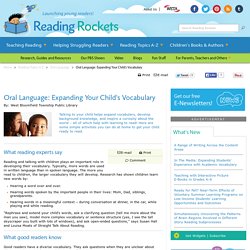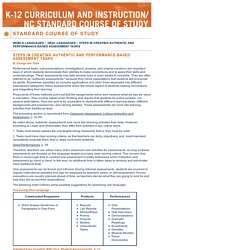

Elementary Reading Early Literacy Instructional Strategies. Phonological and Phonemic Awareness. Phonological awareness is a broad skill that includes identifying and manipulating units of oral language – parts such as words, syllables, and onsets and rimes.

Children who have phonological awareness are able to identify and make oral rhymes, can clap out the number of syllables in a word, and can recognize words with the same initial sounds like 'money' and 'mother.' Phonemic awareness refers to the specific ability to focus on and manipulate individual sounds (phonemes) in spoken words. Phonemes are the smallest units comprising spoken language. Phonemes combine to form syllables and words. For example, the word 'mat' has three phonemes: /m/ /a/ /t/. Students at risk for reading difficulty often have lower levels of phonological awareness and phonemic awareness than do their classmates. What the problem looks like A kid's perspective: What this feels like to me Children will usually express their frustration and difficulties in a general way, with statements like "I hate reading!
" Www.dyslexia-reading-well.com/support-files/the-44-phonemes-of-english.pdf. Phonemic Awareness Activity Worksheets_PDF. Phonemic Awareness vs. Phonics. Phonological Awareness.pdf. Phonemic Awareness: Concepts and Research. Concepts and Research Phonemic Awareness (PA) is: the ability to hear and manipulate the sounds in spoken words and the understanding that spoken words and syllables are made up of sequences of speech sounds (Yopp, 1992; see References). essential to learning to read in an alphabetic writing system, because letters represent sounds or phonemes.

Without phonemic awareness, phonics makes little sense. Fundamental to mapping speech to print. If a child cannot hear that "man" and "moon" begin with the same sound or cannot blend the sounds /rrrrrruuuuuunnnnn/ into the word "run", he or she may have great difficulty connecting sounds with their written symbols or blending sounds to make a word. essential to learning to read in an alphabetic writing system. a strong predictor of children who experience early reading success. An important distinction: Phonemic Awareness vs. Phonological Awareness Explained. Phonological awareness vs. Phonemic awareness.pdf. Oral Language and Vocabulary Development_PDF. Oral Language: Expanding Your Child's Vocabulary. Reading and talking with children plays an important role in developing their vocabulary.

Typically, more words are used in written language than in spoken language. The more you read to children, the larger vocabulary they will develop. Research has shown children learn new words by: "Rephrase and extend your child's words, ask a clarifying question (tell me more about the man you saw), model more complex vocabulary or sentence structure (yes, I see the tall skyscraper you built with lots of windows), and ask open-ended questions," says Susan Hall and Louisa Moats of Straight Talk About Reading. What good readers know Good readers have a diverse vocabulary. Great books to read Alphabet books are useful because they: Support oral language developmentHelp children learn letter sequenceHelp children associate a sound with a letterCan help children build vocabulary (from Phonics from A to Z: a practical guide, Blevins, 1998)
Listening Comprehension. Listening comprehension is more than just hearing what is said; rather, it is a child’s ability to understand the meaning of the words he hears and to relate to them in some way.

When children hear a story, for instance, good listening comprehension enables them to understand it, remember it, discuss it, and even retell it in their own words. This is an important skill to develop even at an early age, because good listeners grow up to become good communicators. Speaking out loud is the most common form of communicating, and learning to fully understand what is being said is paramount if children are to thrive. Tone of voice, pauses between words, where the emphasis is placed in a sentence, and the rhythm and pattern of speech all have an impact on the meaning of the words being spoken and the message they are meant to convey. Teaching listening comprehension.
Word Boundaries - Definition and Examples. Oral-Language-A.pdf. Assessment Tasks. B.

Design the Task Performance tasks, oral presentations, investigations, projects, and original creations are important ways in which students demonstrate their abilities to make connections and to apply their skills and understandings. These assessments may take several days or even weeks to complete. They are often referred to as "authentic assessments," because they mirror expectations that students will encounter as adults. Sometimes classified as complex applications and other times separated into different assessment categories, these assessments share the similar aspect of students making connections and integrating their learning.
Proponents of these methods point out that the assignments mirror and measure what we say we value in education. The preceding section is reproduced from Classroom Assessment: Linking Instruction and Assessment, p. 52-54. As noted above, authentic assessments look more like learning activities than tests. PAWR. Www.sagepub.com/upm-data/40626_1.pdf.
EDRD 830 Int REV Oral Language and Phonological Development. Interventions in Schools.pdf.